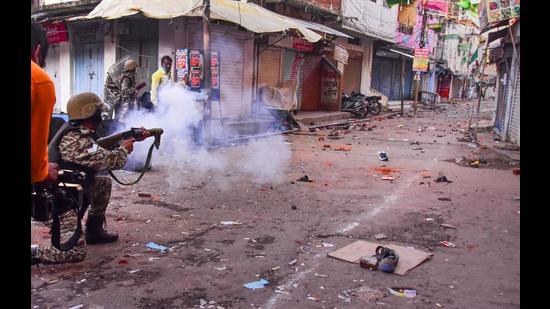
by Burree Sultan 2 October 2023
Once Franklin D. Roosevelt, the late president of the United States of America, expressed the menace of poverty in his wordings, saying, “The test of our progress is not whether we add more to the abundance of those who have much; it is whether we provide enough for those who have too little.” Sociological theorists explain how economic disparity is linked with violence and extremism through the Relative deprivation theory, Social Strain Theory, and Resource Scarcity Theory. These theories are used widely by social scientists to understand the dynamics of violence and extremism. In this case in point and here, they can be used by the case study of South Asia with a special focus on Pakistan.
Relative deprivation theory, which exposes deprivations, leads to violence and extremism in the people, as economic deprivation creates a sense of relative deprivation among the people. From the psychological perspective, the people who are less developed are more aggressive in this context. Similarly, in the context of social strains, there are multiple strains developed due to the economic disparities among the people to be more radical and extremist in this context. Resources sacristy is also linked with the same kind of concept that defines the way that resources are impacting the lives of the common man for being extreme and violent in this regard. These phenomenal concepts about the behaviors of the people that are linked with the economic conditions of the people are truly reflective in the case of South Asia in general and particularly in the case of the study of Pakistan.
South Asia accounts for one-fifth of the global population and keeps the housings of 43% of the global poverty in this way. The per capita GNP of the region is around $440, which is the lowest in the global perspective. There is 46% illiteracy that counts in the region as well. Presently, South Asia is facing multifaceted challenges ahead, both as a region and inter-state relationship, apart from the Indo-Pak messes and conflicts, the region is trapped in the mosaic of the crisis in the quest for the autonomy, terrorism, separatism, sectarian violence, and religious extremism. Since the early 1990s, ideologically based violence the ideological violence increased in the region such as the rise of the ‘Hindutva’ led by RSS, the Maoist movement in Nepal, Hindu extremism, and Hindu Nationalism.
The division in Indian society seemed to be very dangerous for the last few decades, especially the persecution of minorities like Muslims and Christians seemed to be inevitable in this regard. The role of religious-based fanatism is like that of organizations such as Vishwa Hindu Parishad (VHP). The leadership views are harsh and pathetic regarding the minorities living in India, the recent riots in Manipur are the result of these fanatic views. Pakistan is also in the clutches of these violent views like the recently debunked situation in Jariwala, Faisalabad and the violence against the Christian community is also very serious to note.
A proverb, “A hungry stomach doesn’t have any ears”. As for the concerns, the real and high perspective of that this is a true stigma that higher economic disparities lead to higher forms of crime and violence. So according to the sociological perspective, economic disparities lead to violence and extremism. In this context, the examples from South Asia can be taken as a vigorous point of concern. Poverty, which is one of the great causes of the deprivation of people’s basic needs, created discrimination among the masses as well.
In those countries where there are economic woes, there are more vulnerabilities in the context of violence and crime. Examples of the former Soviets can be mentioned here in the above context which shows how crime and revolution are interconnected with each other. As it was said, poverty is the mother of all crimes. Similarly, there is another example of Brazile where there is a lot of corruption and high inflation, and due to poverty in that way, there are also high rates of crime even high rates of rape against women and children as well.
In the context of the South Asian States, there is a very grim and dark picture of violence and extremism. India is the highest example of it for the last few years. Similarly, the example of Pakistan is also important to note in this context of the study. There is an entire need to curb this menace of poverty through collective measures, the role of SAARC must be utilized which is already on the breathing borders, similarly, SCO is an emerging and comparatively highly efficient regional organization that can play a vital role in this context.
